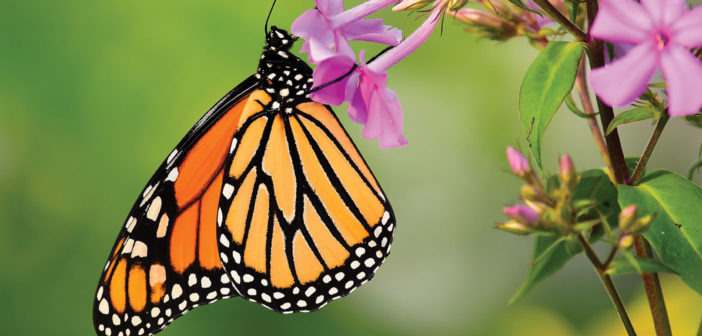They’re delicate. They’re fun. They’re butterflies! The unpredictable flutterers are thought to be good luck and symbolic of rebirth and beauty. Some believe they are omens of good weather and fortune. Butterflies are not just fun to look at, they also play the role of important plant pollinators.
Everyone loves butterflies but because of climate change, sighting one has become a rare occurrence. The Monarch butterfly, once a Michigan mainstay, is close to being included on the endangered species list with its population dropping year after year. With a little work, we can help the little guys out. What can you do? How about building a butterfly garden in your own backyard?
Tips for Turning Your Backyard into a Lepidopterists Dream
1. Embrace the Sun. Butterflies love sunshine. Choose a spot that gets no less than five hours of direct sun. The perfect location would provide some natural protection or shelter from the wind, as well. Make sure it’s an area with adequate vegetation.
2. Provide Puddles. Natural puddles of water that form in mineral-rich soil are important for butterflies. They serve as an additional source of sodium and a place of reproduction and finding a mate (much like our pools and beaches). Butterflies will gather together around a puddle in a behavior called “puddling.” Puddles can be created where none are available by placing or burying a shallow pan near the garden and sprinkling the bottom of the pan with dirt. Then, just add water.
3. Stop & Smell the Flowers. When creating your butterfly garden, the right plants are key. The best choices are nectar-producing plants AND food sources for caterpillars. Flowers are crucial and the colors make a difference. They prefer bright colors such as red, pink, lavender, white or orange – never dark or blue hues. The stronger the scent, the better for butterfly attraction, and choose blossoms with flat tops, large petals or that grow in clusters.
Butterflies are particularly attracted to asters, coneflowers, daisies, ironweed, marigolds and zinnias, while caterpillars prefer violets, asters, thistle, nettle and fennel. The most important plant for the Monarch caterpillar is milkweed – it is the only thing they will eat.
4. Sit Back & Enjoy. Now that you have successfully built your butterfly garden, take a few moments to sit in the shade, sip your favorite warm weather beverage and relax while the butterflies thrive in the environment you created.














